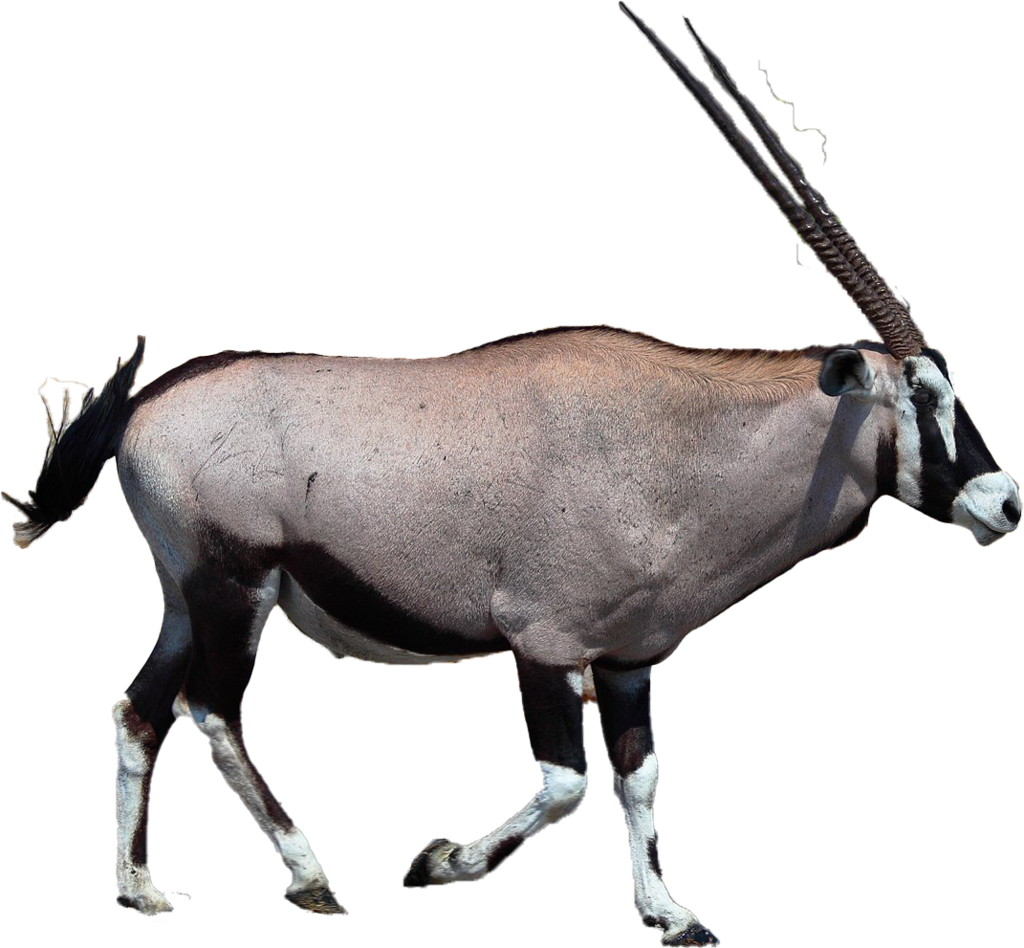
Description:
The oryx stands just over a metre at the shoulder and weighs around 175 lb (79 kg). It has a grey coat with a white underside, separated from the grey by a stripe of black, with black stripes where the head attaches to the neck, along the nose, and from the eye to the mouth and on the forehead. The mane is small and chestnut-coloured; the ringed horns are thin and straight. They are found on both sexes and typically measure 75–80 cm (30–31 in).
Habitat:
It is endemic to the dry and barren regions of Botswana, Namibia, South Africa and (parts of) Zimbabwe, mainly inhabiting the Kalahari and Namib Deserts, areas in which it is supremely adapted for survival.
Diet:
The oryx enjoys feeding on a variety of grass species. They feed during the day, when the plants hold the most water. During the dry season, they feed on poisonous Adenium plants (desert rose).
Behavior:
The oryx stay in bushland and grassland areas. During the wet season, they move to high ground and avoid tall grass and saturated areas. They move great distances to find a perfect location and stay there for a few seasons.